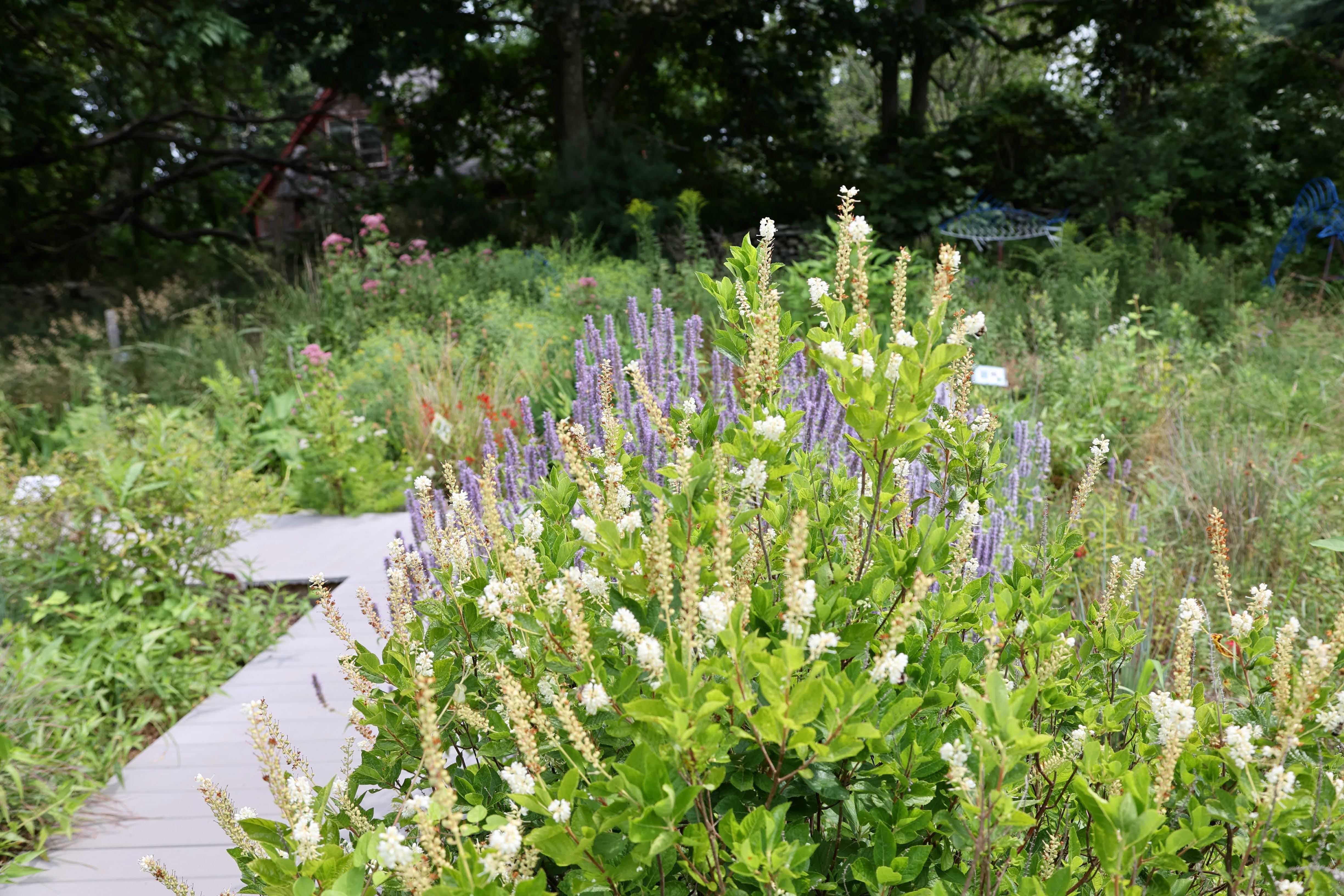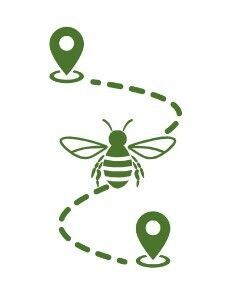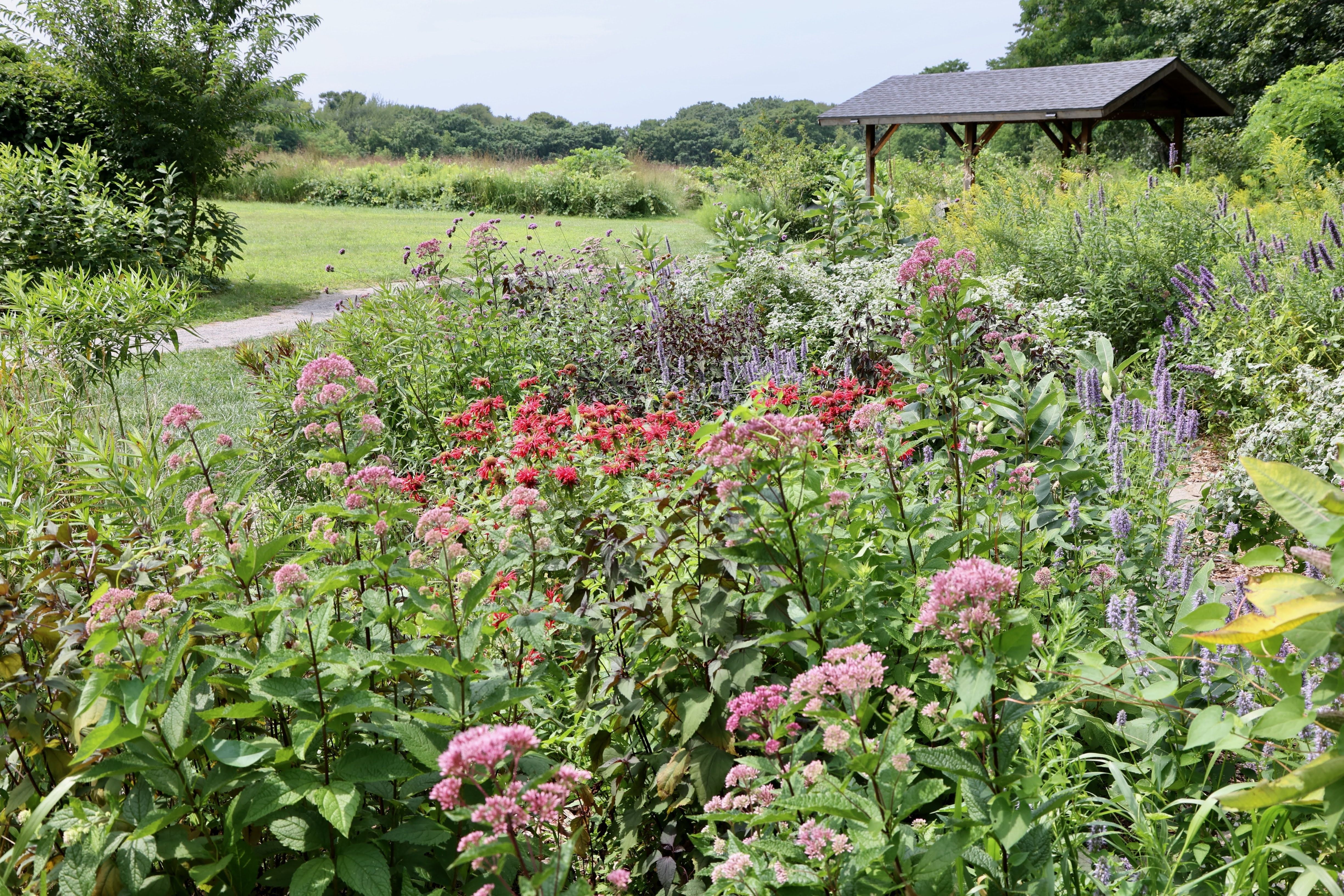
Creating Pollinator Habitat

By turning your yard into habitat, you can help the effort to save the pollinators and the many species of plants and animals that depend on them. Even a single native host plant can help.
The Audubon Society of Rhode Island, local land trusts, the State of RI, and others work to preserve valuable habitat for wildlife–but that is not enough to replace the habitat lost within urban, suburban, and agricultural development. Many pollinators, like bumble bees, can’t fly very far. Yards, parks and businesses can create the corridors of native plants that provide them with the nutrition and habitat they need.
The Basics
You can begin by rethinking your relationship with the land (yards, public spaces, etc.) Typical yards full of trimmed, non-native grasses, shrubs, and trees are of little value to our native wildlife, including birds and insects. Here are some simple things that can help create habitat in your yard:
-
Plant native flowers, trees, and shrubs.
Talk to your local nursery and find plants that are true natives, not cultivars, and choose those that have not been treated with pesticides (many nursery plants are.) Grow a variety of plants with bloom times from spring through fall to provide a continuous source of food for pollinators. Learn more about native plants through:
- Rhode Island Wild Plant Society
- Native Plant Trust
- Ladybird Johnston Wildflower Database -
Mow less often.
Plants such as clover and violets will emerge and provide nectar for insects if given a chance to bloom. You can also replace some of your lawn with a native ground cover, which requires less mowing.
-
Stop using pesticides and fertilizers on your yard.
The majority of pesticides (including herbicides, insecticides, fungicides and rodenticides) kill broadly and their extensive use has been tied to the decline of species important to ecosystems, including pollinators. Choosing native plants over non-natives will reduce the need for these chemicals.
-
Leave some leaves in the fall.
Use fallen leaves as mulch in your beds instead of buying bark mulch which may contain dyes and other chemicals. The leaves will provide shelter for insects, including native bees, over the winter and nutrition for your plants as they decompose. Chopping or burning your leaves kills overwintering insects like the luna moth (Actias luna).
-
Leave the stalks and seed heads of your native plants throughout the winter.
Their hollow stems provide nesting places for insects and food for birds. Trim the stalks to 12 inches high in the spring and place the stalks in an undisturbed area to be used by the wildlife.
-
Remove invasive plants from your yard.
Invasive species are non-native species (plants, as well as animals) that can lead to the extinction of native plants and animals, destroy biodiversity, and permanently alter habitats. View the list of invasive species in RI.
How to Start A Pollinator Garden
Learn how to create a pollinator garden from start to finish, including which native plants to use. Check out the USDA guide for Rhode Island, here!
Join the Audubon Pollinator Alliance
Do you have a pollinator-friendly yard/garden? Join the Audubon Pollinator Alliance! Register your garden and pledge not to use pesticides.


















